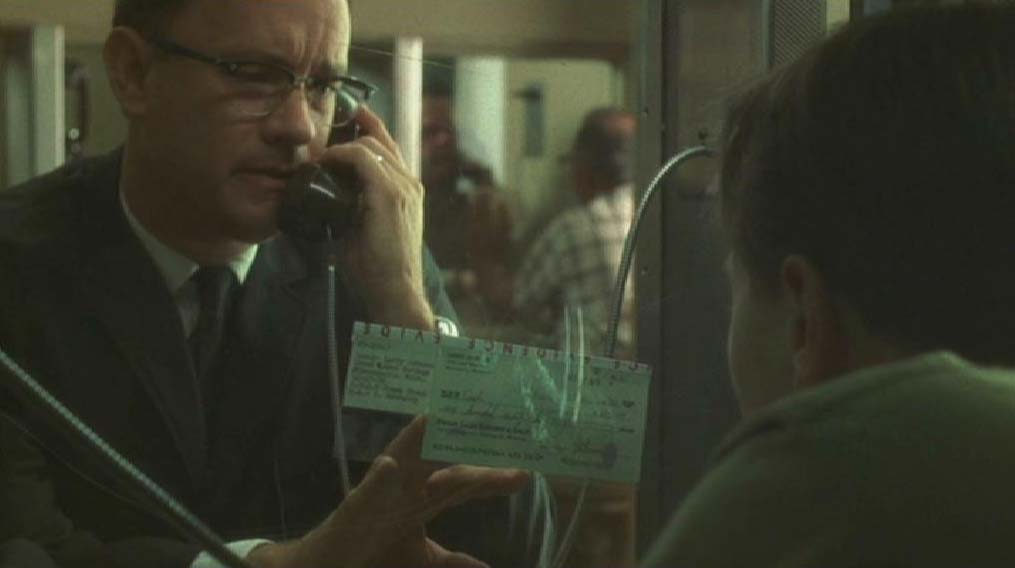
Scene 20 — 2:00:09
The movie gives the following information on Frank Abagnale’s sentence: twelve years in an isolation cell in a maximum-security prison (in Atlanta) without the possibility of parole.
In real life, he got parole in Houston, Texas after four years. The twelve years are accurate, but he only served one third of his sentence. And forget the maximum security and isolation cell altogether!
He got convicted on 8 charges out of 800 possible charges. (book “Catch Me If You Can”, page 208)
It didn’t take long for the crush of state and federal complaints to pour in: forgery, passing worthless checks, swindling, mail fraud, counterfeiting, and on and on. Prosecutor and U.S. attorneys from around the country competed to be the one who would bring me to trial, as I were some sort of lottery prize. They all had strong cases.
There were hundreds of outstanding charges against me, but the judge collapsed them into eight counts. He sentenced me to ten years on each of seven counts of fraud, to run concurrently, and two years on the one count of escape, which were to be served consecutively. (book “The Art of the Steal”, pages 7-8)
Abagnale starts to help the feds from prison, as Hanratty visits him during yet another Christmas period.

Scene 20 — 2:00:09
Hanratty, during his first visit, reports that the paperhanger — slang for “check forger” — uses a stencil machine and an Underwood. Underwood is a typewriter from the 20s and 30s! As other typewriters in the pre-Selectric years, it uses manually pressed typebars. The Underwood 5, the first modern typewriter, was introduced in 1901. The design remained basically unchanged from 1920 until 1940. Five million units were sold; at its peak, this single model had a 50% market share. (The Italian typewriter manufacturer Olivetti controlled the Underwood company from 1959 onwards and the name Underwood disappeared as the merger progressed.)
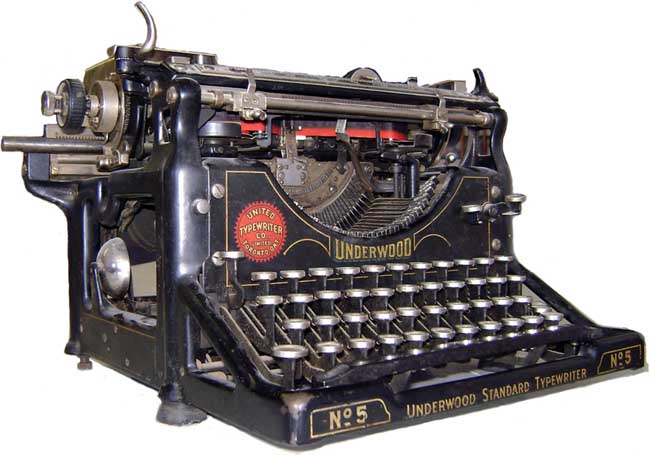
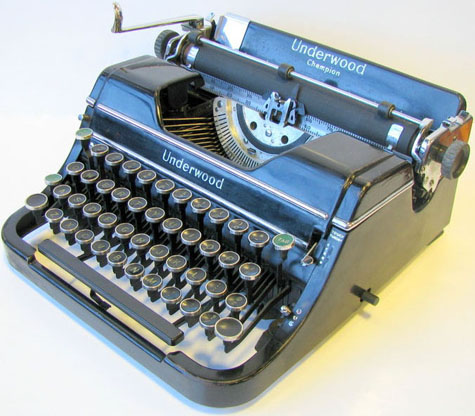
Actor Tom Hanks, who plays Carl Hanratty, owns hundreds of typewriters collected since his teenage years. (Woody Allen still writes his material on the old Olympia SM-3 typewriter he bought when he was 16 years old. He lost the lid that covers the typebars many years ago…)
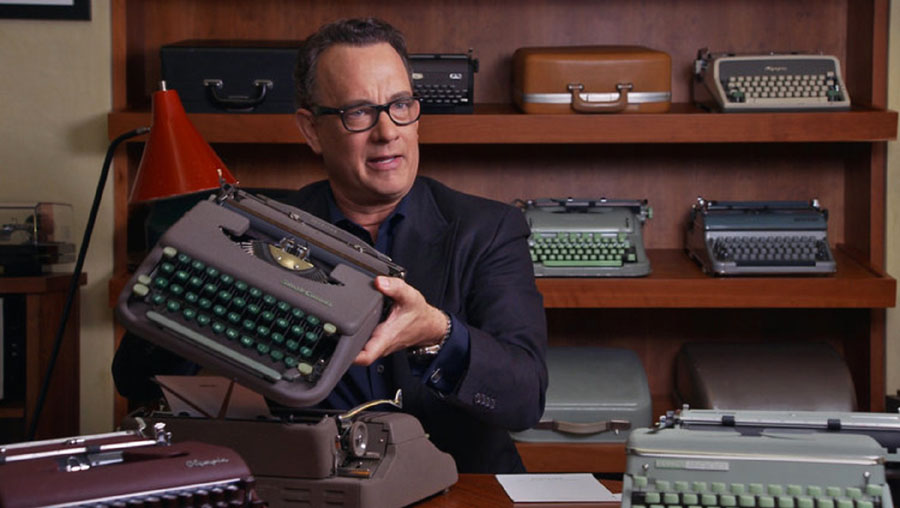
Hanks has written a best-selling book of stories, “Uncommon Type”, with some connection to typewriters. In one short story, the metal machine may be a key element of the plot, in the next an accidental sideshow or a hidden gem to be discovered by the careful reader.
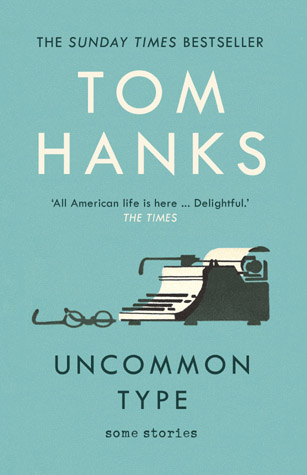
Tom Hanks
“Uncommon Type”
Some Stories
Arrow, 2018
ISBN 1784759430
He has also written a one-page foreword, “Eleven Reasons to Use a Typewriter”, to the book “Typewriters — Iconic Machines from the Golden Age of Mechanical Writing” of the I.B.M. Selectric repairman Tony Casillo, but the effort was all too quickly written as a favor for a fellow collector and offers no insight. A short quote suffices to prove its superficiality: “10. You really want to bother the other customers at the coffee place. 11. Typewriter = Chick Magnet.”
![]()
Tony Casillo
“Typewriters”
Iconic Machines from the Golden Age of Mechanical Writing
Chronicle Books, 2017
ISBN 1452154880
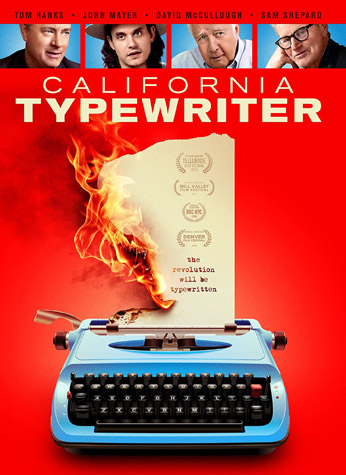
As for his mobile app Hanx Writer, well, it puts the look, feel and above all the sound of a good old-fashioned typewriter in your smartphone or tablet. (The basic version of the app is free. Connect an external keyboard for optimal use.)
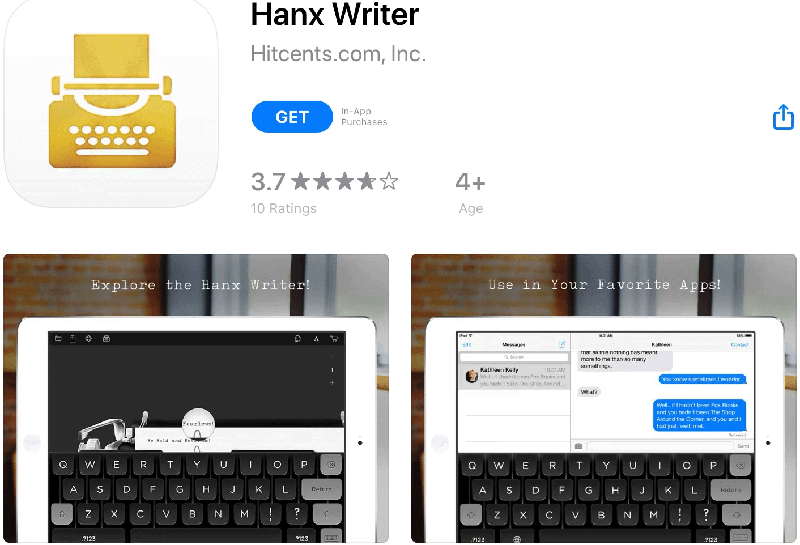
During the second visit by Hanratty and F.B.I. assistant director Marsh, Abagnale comments a bad check as follows: “There’s no perforated edge [...]. This check was hand cut, not fed. The paper is double bonded, much too heavy to be a bank check. The magnetic ink [is] raised against my fingers instead of flat. [...] This doesn’t smell like MICR. It’s some kind of a [...] drafting ink, [...] the kind you get at a stationery store.”
We need to analyze his “technical” comments in detail, as we already did with the printers’ remarks.
There’s no perforated edge. This check was hand cut, not fed.
Abagnale discusses the perforated edge of the check — don’t confuse with the perforation of the word “PAID” in the check, which is also illustrated in the movie.
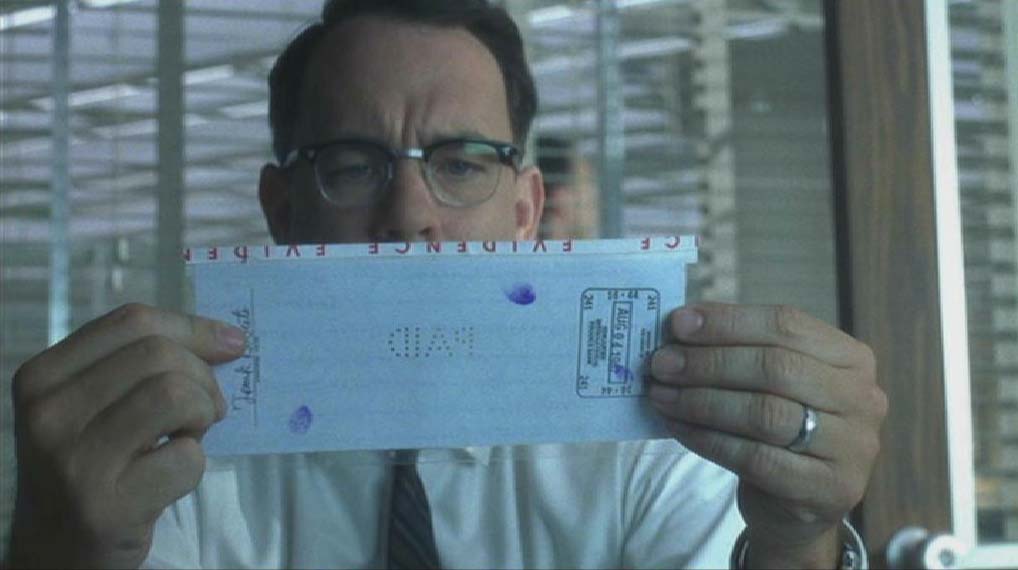
Scene 18 — 1:46:42
His book “The Art of the Steal” explains where the problem lies (on page 43): “Most forged checks don’t have perforated edges. Real checks do. The only exception to this rule are United States Government Treasury checks. Forgers could create checks with perforated edges, but few bother as it’s expensive. When forgers buy check paper, they usually buy standard 8.5x11” sheets. They print out three checks on a sheet of paper and then cut them apart (with a paper trimmer). When you’re handed one of their checks, there is no perforated edge anywhere on the check. It’s smooth on all four sides. That’s usually a dead giveaway that it’s a forgery.”
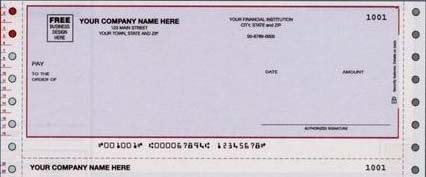
When Abagnale has Pan Am pay checks printed in France by the father of a girlfriend, he sees to it that they’re perforated. “Real Pan Am checks, four to a page, twenty-five pages to the book, perforated and on I.B.M. card stock!” (book “Catch Me If You Can”, pages 126-127) Perforated and printed on card stock, not on office paper — sorry, bond paper!
The cut or perforated edges of checks shed light on a previous scene of the movie — the arrest in France. When Hanratty enters the printing works in Montrichard, Hanratty stops the press and single checks fly into the air around Abagnale.
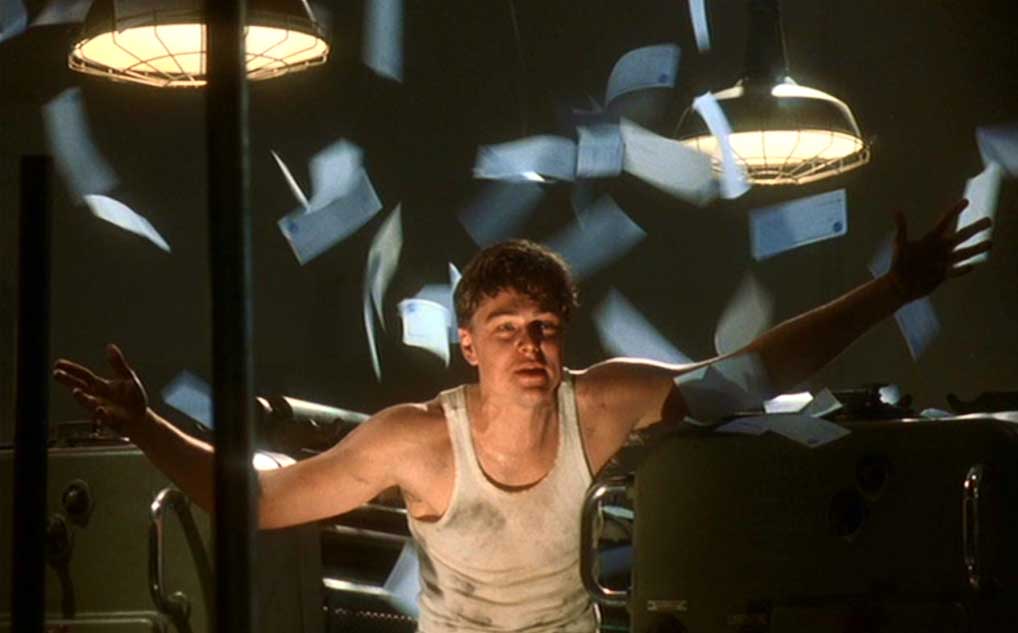
Scene 18 — 1:48:47
Not only done was this done purely for dramatic effect — no printing press sends its paper flying when you hit the emergency button, the paper feeder stops at the same time as the rotating press — but from a forger’s point of view, it’s dead wrong! When you take the effort of operating a printing press, in Abagnale’s case a Heidelberg, you print several checks on large sheets of paper. Afterwards, you cut them down with a paper trimmer. Or you go the extra mile and print your checks on perforated check stock. But single checks? No way!
The paper is double bonded, much too heavy to be a bank check.
In the scene, Abagnale says double-bonded paper is never used for a real check. Bond paper is definitely a technical term; it’s easier to call it writing paper, xerographic paper, copy paper or printer paper. It’s simply the kind of paper you use at the office in copiers, laser and inkjet printers and fax machines. It’s used for letterheads, stationery and business forms. The invoices you get in the mail are usually printed on bond paper, for instance.
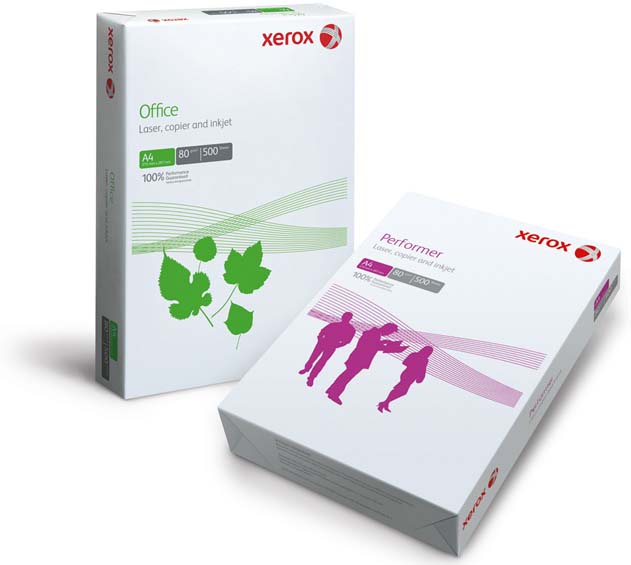
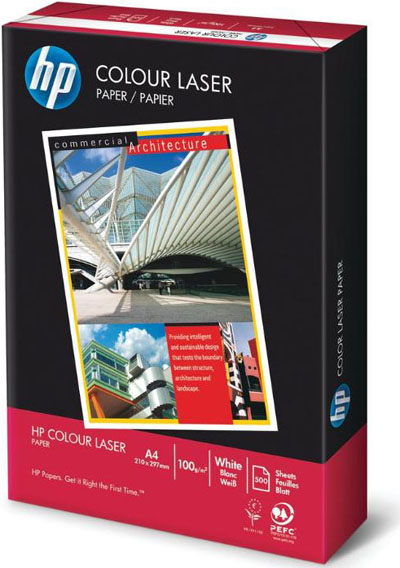
It is strong, durable paper with erasability, good absorption and rigidity as characteristics. But one thing it is not — the kind of paper checks are printed on! Yes, Abagnale speaks not of bond paper but of double bonded paper, which refers to the thicker variation of bonded paper, but even so. Would you accept a check that was printed on a simple or somewhat thicker piece of printer paper? At the very least, you expect another type of paper. Nor would you for instance accept a $50 bill printed on printer paper. It would feel and look wrong the moment you held it in your hand…
The magnetic ink is raised against my fingers instead of flat.
In those days, impact printers — a letterpress and similar “crude” printing techniques — were used to put the MICR line on the checks. Nowadays, many non-impact printers, for instance laser printers, are used as well. As a result, the codeline can be a bit embossed as well as debossed!
(Impact printers are a class of printers that work by banging a head or needle against an ink ribbon to make a mark on the paper. This includes the dot matrix printing, daisy-wheel printers and line printers. Laser and inkjet printers are non-impact printers. Impact printers are considerably noisier than non-impact printers: the printer head strikes the paper and constantly moves from one side to the other.)
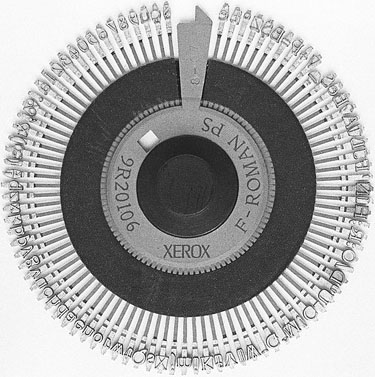
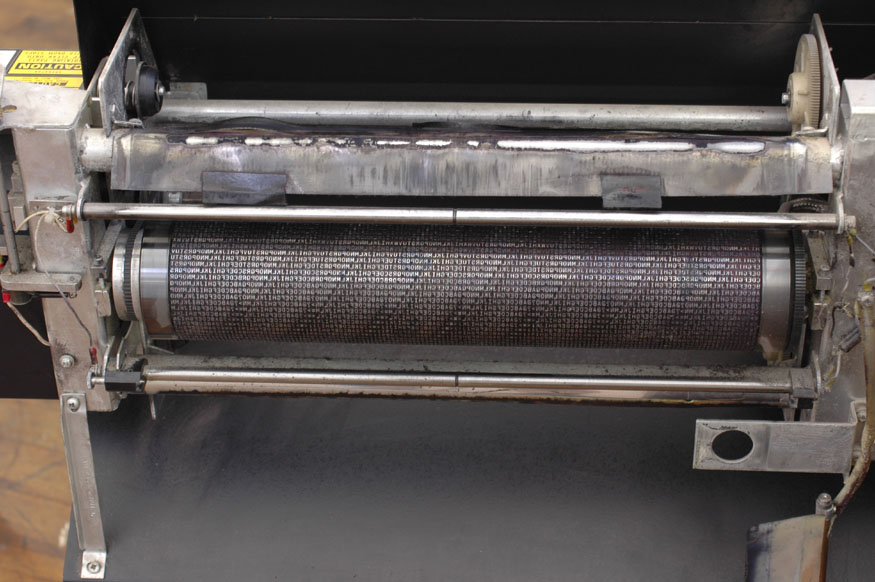
The letters are “raised against the fingers”. This indicates embossing. With a letterpress, impressions can be pressed into the paper to create relief — if raised, we speak of “embossing”, if sunken, of “debossing”.
Here, the embossing is not created for any sophistiscated, aesthetic reason, it’s just the side-effect of the impact printers that were used to print the codeline on the check!
This doesn’t smell like MICR. It’s some kind of a drafting ink, the kind you get at a stationery store.
Magnetic ink has a special smell because 50 to 60% of the ink is magnetic particles, in most cases iron oxide. To you and me, that’s common rust!

The metallic particles are magnetized when the MICR reader runs them past a magnet before they’re read by magnetic heads.
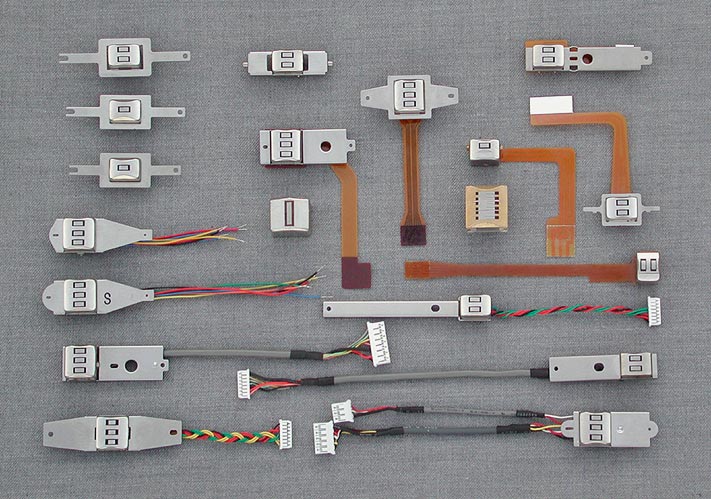
Because of the heavy iron oxide content, MICR ink looks dull, not shiny! Shiny ink on the codeline, just as the smell, is a dead giveaway that you’re dealing with a fake check…
Magnetic ink was developed in the early 60s by Deluxe Checks on demand of the American Bankers Association (“ABA”).

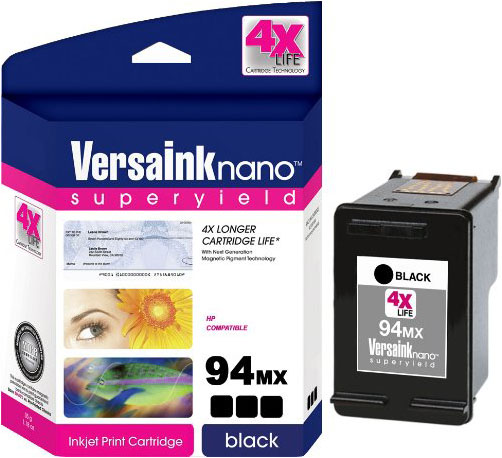
But if magnetic ink is readily available, which it is, why don’t check forgers use it? After all, wouldn’t their checks be more realistic for it? “The Art of the Steal” explains why (on pages 43-44). Not using it enhances “the float”!
Most forgers don’t use magnetic ink to do the routing numbers. It’s not because they aren’t able to. Anyone can go into an office supplies or computer store and buy a magnetic ink cartridge for their printer. Forgers don’t do it because of the float. Meaning, if I put magnetic ink on the check and cashed it at a grocery store, the bank computers would read it overnight and reject it. But if I use regular black ink, the computer in the clearing house can’t read it. The next day, the check will have a Lundy strip put over the routing number. They’ll reencode it with magnetic ink, but they’ll still use the routing number that I put on the check. It’ll still go to Hawaii, but now I’ve bought two more days. If you’re passing six-hundred dollar checks and you’re doing ten a day, that’s twelve thousand dollars more profit.
(A “Lundy strip” or “repair strip” is the white adhesive label that a bank affixes to the bottom of a check to correct errors in the MICR line or codeline.)
In the movie, Abagnale gets “hired” by the F.B.I.’s “Financial Crimes” unit to serve the remaining seven years of his sentence there. You see Abagnale becoming their “check fraud specialist”. He even has his own office…
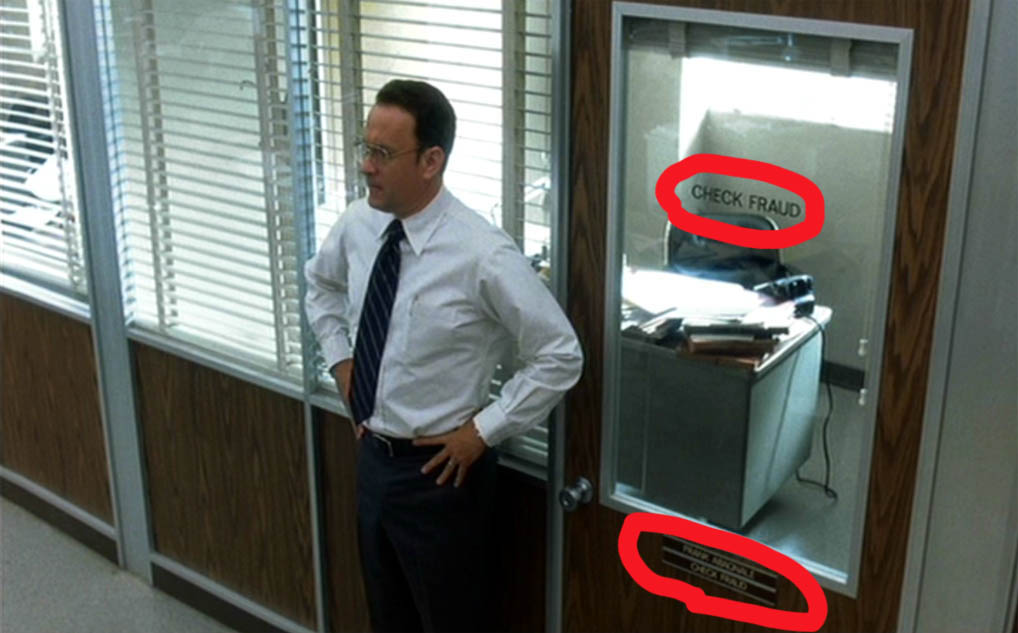
Scene 21 — 2:07:29
From a literal point of view, the info is wrong: he got parole after 4 years. It was only later that he became a secure documents consultant and started working with the F.B.I., not for the F.B.I. Nor did he ever have an office there! (book “Catch Me If You Can”, page 210)
His book “The Art of the Steal” gives extra information (on pages 14-16): after his parole, he worked in a pizza parlor and a supermarket but got fired each time when the employer found out his criminal past. Next, he worked as a projectionist in a movie theatre. (He had been the projectionist on weekends in jail!)
At this point, the government, through his parole officer, asked him to train police forces to combat fraud, something he does for free to this day. He doesn’t even get his expenses paid. Keith Slotter, the former Asistant Director of the F.B.I., confirms this in his foreword to Abagnale’s most recent book: “I tried to at least pay for his travel and expenses, but he’d insist that I only tell him where to be and when.” (book “Scam Me If You Can”, page X)
He gives a course at the F.B.I. Academy (in Quantico, Virginia) and for the F.B.I. National Academy — those are the programs organized by the F.B.I. for the other police forces throughout the U.S. (His course at the Academy, given 55 days each year, was attended by his oldest son Scott, an F.B.I. agent.)
Nor does he limit his assistance of government agencies to the United States: “I’ve trained thousands of law enforcement agents — not only in this country [the U.S.] but with Scotland Yard, the Royal Canadian Mounted Police and the Australian Federal Police — in how to confront the problem of identity theft and fraud.” (book “Stealing Your Life”, pages 34-35)
According to some sources, his official title is “Special Advisor to the F.B.I.’s Financial Crimes Unit”, but Abagnale himself doesn’t use that title anywhere… The published screenplay offers another piece of information (on page 154) that got cut from the movie and that I’m unable to confirm. A title card (become subtitles in the movie) before the closing credits reads as follows: “Special agent Carl Hanratty [has] been awarded three distinguished service awards from the F.B.I. Frank Abagnale has four.”
Other than his cameo role, Abagnale did not participate in the movie, F.B.I. regulations don’t allow it. He was offered pardons by three sitting presidents, but refused absolution each time. He rightly feels that men have to learn from their experiences, and does not believe that a piece of paper would change anything for him.
His private business in secure documents and fraud consultancy got started as follows: he first approached a local bank director with the blessing of his parole officer, proposing to show his tellers how to detect bad checks.
Financially, Frank Abagnale does very well. As a speaker, he gets $20,000 to $30,000 for a gig.
His success allowed him to repay the $2.5 million debt completely and quickly. He’s paid back every bad check he ever wrote! (This fact is explicitely mentioned in the musical “Catch Me If You Can”, in the non-singing part of track 17.)
Scene 20 also shows Abagnale’s mug shot. According to the movie, Abagnale was arrested in March 1970. That date is wrong, because he appeared before the court in April 1971. (book “Catch Me If You Can”, page 208)
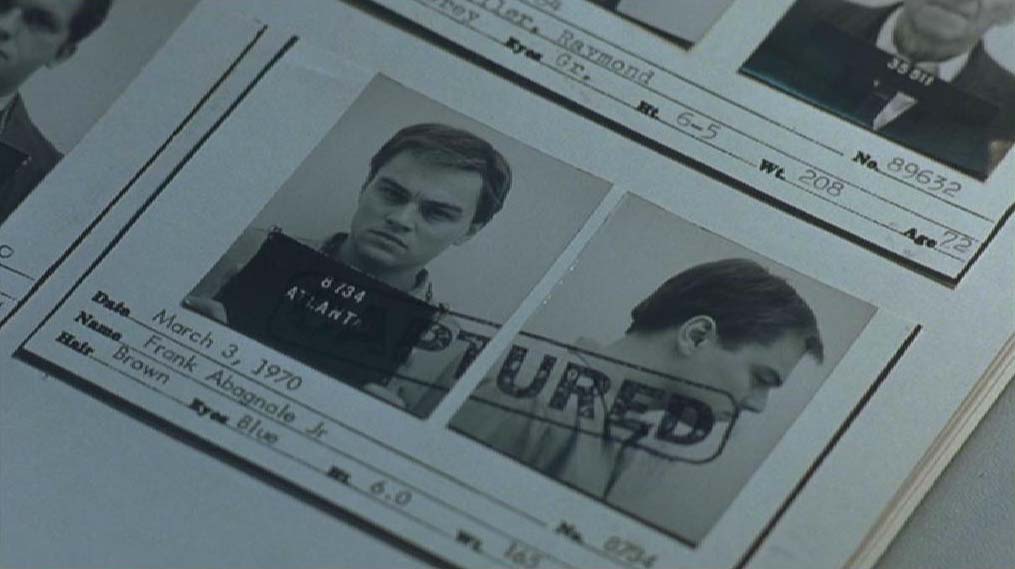
Scene 20 — 2:05:02
The continuity error we’ve already explained!
Opening titles — Abagnale — Hanratty — Checks — Stationery — Pay checks — Pilot — MICR — Typewriter — Hotel — M.D. — Lawyer — Printing — Arrest — G-man — Sitemap — Search